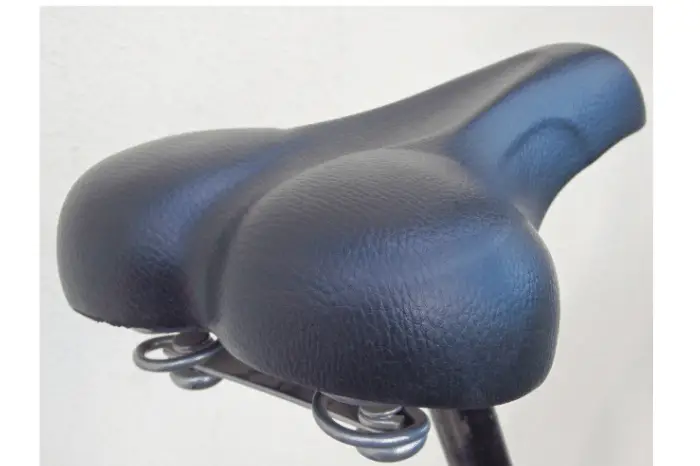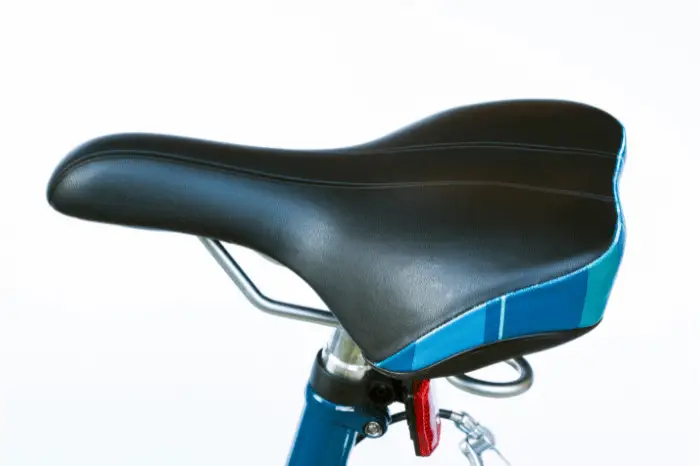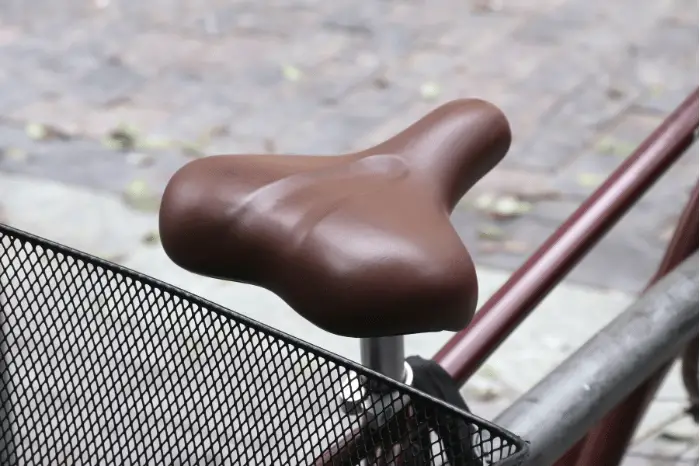
If you’re in the market for a new bike seat, you may be wondering if it’s okay to use a seat designed for the opposite gender. While bike seats are typically designed with gender-specific considerations in mind, the reality is that no hard and fast rule says men can’t use women’s bike seats or vice versa.
In fact, there are many instances where a man may find a women’s bike seat to be a better fit for his body type or riding style, and the same goes for women using men’s bike seats.
When it comes to bike seats, comfort and fit are key. The anatomy of men and women can differ in significant ways, and this is often reflected in the design of bike seats.
Women’s bike seats, for example, tend to have more padding towards the back of the seat to prevent discomfort in the seat bones, while men’s seats may have more padding towards the front to provide extra support.
However, these design considerations are not set in stone, and there is no reason why a man can’t use a woman’s bike seat if it is a better fit for his body type or riding style.
Key Takeaways
- While bike seats are typically designed with gender-specific considerations in mind, no hard and fast rule says men can’t use women’s bike seats or vice versa.
- The anatomy of men and women can differ in significant ways, and this is often reflected in the design of bike seats. However, these design considerations are not set in stone, and there is no reason why a man can’t use a woman’s bike seat if it is a better fit for his body type or riding style.
- When selecting a bike seat, it’s important to consider your individual anatomy and riding style, rather than simply relying on gender-specific design considerations.
Anatomy of Bike Seats
When it comes to bike seats, there are design differences between those made for men and those made for women. Understanding these differences can help you choose the right bike seat for your body type and riding style.
Design Differences
One key difference between men’s and women’s bike seats is the shape of the seat. Women’s seats are generally wider and shorter than men’s seats, with more padding towards the back of the seat to prevent discomfort in the sit bones.
This is because women have wider hips for childbearing, which is a result of the pelvic bones being set wide apart.
Men’s bike seats, on the other hand, are generally narrower and longer than women’s seats, with more padding towards the front of the seat. This is because men have a narrower pelvis and a longer perineum, which means they need more support at the front of the seat to prevent discomfort and numbness.
Another design difference between men’s and women’s bike seats is the shape of the cutout or groove in the center of the seat. Women’s seats often have a wider and shallower cutout or groove, while men’s seats have a narrower and deeper cutout or groove. This is because men and women have different pressure points in the perineum area.
Impact on Comfort and Performance
Choosing the right bike seat can have a significant impact on your comfort and performance while riding. A seat that is too narrow or too wide can cause discomfort and pain, while a seat that is too soft or too firm can affect your balance and control.

For men, using a women’s bike seat can be uncomfortable and may cause numbness or pain in the perineum area. Similarly, women who use men’s bike seats may experience discomfort or pain in the sit bones area.
Ultimately, the best way to ensure comfort and performance while riding is to choose a bike seat that is designed for your body type and riding style. Take the time to research and try out different seats to find the one that works best for you.
Gender-Specific Design Considerations
When it comes to choosing the right bike seat, gender-specific design considerations are of utmost importance. Men and women have different anatomies, which means that a bike seat designed for one gender may not be suitable for the other. In this section, we will explore the key design considerations that manufacturers take into account when designing bike seats for men and women.
Ergonomics and Fit
Ergonomics and fit are two of the most important design considerations when it comes to gender-specific bike seats. Men and women have different pelvic anatomies, which means that the shape and size of the bike seat need to be tailored to their specific needs. Women’s bike seats are generally wider and shorter than men’s bike seats to accommodate their wider sit bones and shorter torsos. Men’s bike seats, on the other hand, are narrower and longer to accommodate their narrower sit bones and longer torsos.
When choosing a bike seat, it’s important to consider your individual anatomy and riding style. A seat that is too narrow or too wide can cause discomfort and even pain, while a seat that is too long or too short can cause chafing and other health issues.
Health and Safety Aspects
Health and safety aspects are also important design considerations when it comes to gender-specific bike seats. Women are more prone to genital numbness and other health issues due to the pressure exerted on their soft tissue during cycling. To address this, women’s bike seats often feature cutaways or channels to alleviate pressure on certain areas of the body and provide ventilation and increased air flow on those long, sweaty rides.
Men, on the other hand, are more prone to prostate issues due to the pressure exerted on their prostate gland during cycling. To address this, men’s bike seats often feature a cutout or a relief channel to reduce pressure on the prostate gland and improve blood flow to the area.
In conclusion, when it comes to choosing a bike seat, it’s important to consider your individual anatomy and riding style. Gender-specific design considerations play a vital role in ensuring a comfortable and safe ride for both men and women.
Interchangeability of Bike Seats
If you’re wondering whether a man can use a woman’s bike seat or vice versa, the answer is yes, but with some caveats. While some bike seats are specifically designed for men or women, there are universal saddles that can fit both genders.
Adjustment and Compatibility
Before swapping bike seats, it’s important to check the compatibility of the seat with your bike. Not all bike seats are interchangeable, and some may require special adapters or clamps to fit properly. Make sure to check the dimensions and rail type of your current seat and compare it to the potential replacement.
Another factor to consider is the adjustment of the seat. Bike seats can be adjusted for height, tilt, and fore/aft position. It’s important to adjust the seat to your personal anatomy and riding style for optimal comfort and performance.
Personal Preference and Adaptability
The shape and size of a bike seat can also affect its suitability for different body types and riding styles. Women’s bike seats tend to have more padding towards the back to prevent discomfort in the sit bones, while men’s seats may have a longer nose for better support during aggressive riding.
Ultimately, the choice of bike seat comes down to personal preference and adaptability. A man can use a woman’s bike seat if it’s comfortable and fits well, and vice versa. It’s important to test out different seats and make adjustments as needed to find the right fit for your body and riding style.

In summary, while some bike seats are specifically designed for men or women, there are universal saddles that can fit both genders. Before swapping bike seats, it’s important to check the compatibility and adjustability of the seat. Ultimately, the choice of bike seat comes down to personal preference and adaptability.
Selecting the Right Bike Seat
When it comes to selecting the right bike seat, there are a few things to consider. The right bike seat can make a huge difference in your overall comfort while cycling. Here are some factors to consider when choosing the right bike seat for you.
Assessment of Riding Style
The type of bike seat you choose will depend on your riding style. If you’re a recreational cyclist, you may want a wider, more cushioned seat that provides more support. If you’re a competitive cyclist, you may want a narrower seat that allows for more freedom of movement.
Material and Padding Choices
Another important factor to consider when choosing a bike seat is the material and padding. Bike seats can be made of a variety of materials, including leather, synthetic leather, and plastic. Leather seats are generally more durable and comfortable, but they can be more expensive. Synthetic leather seats are a more affordable option, but they may not be as comfortable or durable as leather seats.
Padding is also an important consideration when choosing a bike seat. Some seats have little to no padding, while others have a lot of padding. The amount of padding you need will depend on your personal preference and the type of riding you plan to do. If you plan to ride long distances, you may want a seat with more padding to provide extra comfort. If you plan to ride shorter distances, a seat with less padding may be more appropriate.
In conclusion, selecting the right bike seat is crucial for your comfort while cycling. Consider your riding style, material, and padding choices when choosing the right seat for you.
Frequently Asked Questions
What are the key differences between men’s and women’s bike saddles?
Men’s and women’s bike saddles differ in shape, size, and padding. Women’s saddles are generally wider and shorter, with more padding towards the back to support the sit bones. Men’s saddles are narrower and longer, with less padding. The reason behind this is that men’s and women’s pelvises are shaped differently. Women’s pelvises are wider, and men’s pelvises are narrower. Therefore, a saddle that fits a woman comfortably may not fit a man, and vice versa.
Is it comfortable for a man to use a saddle designed for women?
Yes, a man can use a saddle designed for women. However, it may not be the most comfortable option. Men’s and women’s sit bones have different widths, and using a saddle that is too wide or too narrow can cause discomfort, pain, or even injury.
Additionally, a saddle with too much padding can cause chafing or rubbing. It is recommended that men use a saddle designed for men, but if a saddle designed for women feels comfortable, then there is no harm in using it.
Can women comfortably use bike seats designed for men?
Yes, women can use bike seats designed for men, but it may not be the most comfortable option. Men’s saddles are generally narrower and longer, with less padding towards the back. Women’s sit bones are wider, and using a saddle that is too narrow can cause discomfort, pain, or even injury.
Additionally, a saddle with too little padding can cause chafing or rubbing. It is recommended that women use a saddle designed for women, but if a saddle designed for men feels comfortable, then there is no harm in using it.
What should be considered when selecting a unisex bike saddle?
When selecting a unisex bike saddle, it is important to consider the following factors:
- Width: The saddle should be wide enough to support your sit bones, but not too wide that it causes discomfort or pain.
- Length: The saddle should be long enough to provide support, but not too long that it causes chafing or rubbing.
- Padding: The amount and location of padding should be appropriate for your body type and riding style.
- Cutout: Some saddles have a cutout or channel in the middle to relieve pressure on sensitive areas.
- Material: The material should be durable, breathable, and easy to clean.
How does saddle design affect comfort for different genders?
Saddle design affects comfort for different genders in several ways. Women’s saddles are wider and shorter, with more padding towards the back to support the sit bones. Men’s saddles are narrower and longer, with less padding.
The shape and size of the saddle should match the rider’s anatomy to prevent discomfort, pain, or injury. Additionally, the location and amount of padding can affect comfort. A saddle with too much padding can cause chafing or rubbing, while a saddle with too little padding can cause discomfort or pain.
It is important to select a saddle that matches your body type and riding style to ensure maximum comfort.
